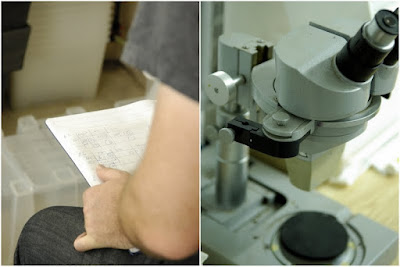We now return to our story of mosquitofish from murky waters in southern France ... gallantly collected and brought back to the lab, where they were used to address a very important question:
How expensive is pregnancy?
Now, having been pregnant once before, I was willing to share my own experiences with expense in pregnancy: the financial costs associated with becoming addicted to eBay; the social costs of inexplicable moodiness; the energetic costs of lumbering to and from the bathroom; the mental costs manifested in an inability to concentrate/find keys/remember things.
But, apparently fish are different.
Mosquitofish, in fact, are live-bearers that can produce
20 to 70 young in a pregnancy - young that altogether can weigh up to
30-40% of the female's own body weight.
This extra mass and the energy required to produce all these baby fish can substantially increase a female's metabolism - even when she's resting. A higher resting (or basal) metabolism would be expected to limit a female's metabolic scope.
What's metabolic scope? It's the difference between resting and maximum metabolic rates - or the amount by which the body can increase metabolism to deal with high levels of physical activity or stresses. Because maximum metabolic rates are limited by the body's capacity to uptake oxygen and eliminate cell waste, they don't change much. So we expect the metabolic scope of a pregnant mosquitofish to diminish as her resting metabolic rate increases.
But.
That's not all.
Temperature also increases the resting metabolic rate of fish: higher temperatures mean higher resting metabolic rates.
So that's what Robbie and Frank and their French collaborators were keen to look at - how temperature affects the metabolic scope of pregnant mosquitofish.
(to be continued ...)












